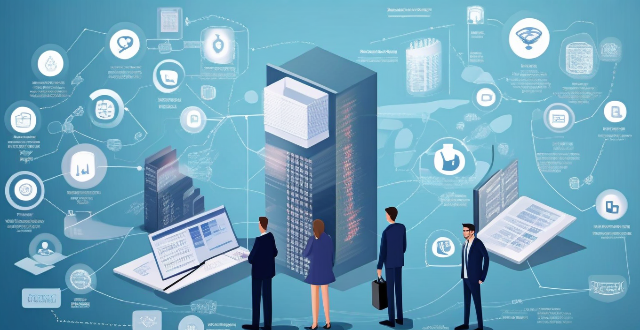Remote education platforms ensure data privacy and security through encryption, access controls, two-factor authentication, regular security audits, and data retention policies. These measures help protect user data during transmission and storage, restrict access to sensitive information, add an extra layer of security, identify and fix vulnerabilities, and minimize the risk of data breaches.

How Do Remote Education Platforms Ensure Data Privacy and Security?
Remote education platforms play a crucial role in today's digital age, providing access to educational resources from anywhere in the world. However, with the increasing use of these platforms, concerns about data privacy and security have also grown. In this article, we will explore how remote education platforms ensure data privacy and security for their users.
1. Data Encryption
One of the most effective ways to ensure data privacy and security is through encryption. Remote education platforms use encryption algorithms to protect user data during transmission and storage. This makes it difficult for unauthorized parties to access or modify the data.
Examples of Encryption Techniques:
- Transport Layer Security (TLS): Used to secure communication between the client and server by encrypting the data being transmitted.
- Advanced Encryption Standard (AES): A symmetric encryption algorithm used to encrypt data at rest.
2. Access Controls
Access controls are essential for ensuring that only authorized users can access sensitive information. Remote education platforms implement various access control mechanisms to restrict access to specific resources based on user roles and permissions.
Examples of Access Control Mechanisms:
- Role-Based Access Control (RBAC): Assigns specific roles to users and grants permissions based on those roles.
- Attribute-Based Access Control (ABAC): Grants access based on attributes such as user identity, location, and device type.
3. Two-Factor Authentication (2FA)
Two-factor authentication adds an extra layer of security by requiring users to provide two forms of identification before accessing their accounts. This helps prevent unauthorized access even if a user's password is compromised.
Examples of Two-Factor Authentication Methods:
- SMS Verification: Sends a code to the user's phone via SMS that must be entered to log in.
- Time-based One-Time Password (TOTP): Generates a unique code that changes periodically, which must be entered within a short time frame to gain access.
4. Regular Security Audits and Updates
To maintain the highest level of security, remote education platforms regularly conduct security audits and update their systems with the latest security patches. This helps identify and fix any vulnerabilities that could be exploited by attackers.
Examples of Security Audit Practices:
- Penetration Testing: Simulates attacks on the system to identify potential weaknesses.
- Vulnerability Assessments: Scans the system for known vulnerabilities and suggests remediation actions.
5. Data Retention Policies
Remote education platforms must adhere to strict data retention policies to ensure that user data is not stored longer than necessary. This helps minimize the risk of data breaches and ensures compliance with regulations such as the General Data Protection Regulation (GDPR).
Examples of Data Retention Practices:
- Anonymization: Removes personally identifiable information from user data after a certain period.
- Pseudonymization: Replaces personally identifiable information with artificial identifiers, making it more challenging for attackers to link the data back to individual users.
In conclusion, remote education platforms employ various strategies to ensure data privacy and security for their users. By implementing encryption, access controls, two-factor authentication, regular security audits, and data retention policies, these platforms can provide a safe and secure environment for online learning.